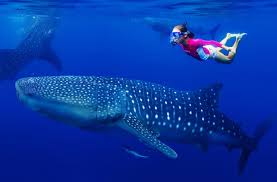Belize recently made the historic decision at a conference to protect 30 percent of its ocean territory – this commitment marks an immense feat!
Belize is an idyllic tropical paradise full of scenic and ecological riches for adventurous travelers yet remains a developing nation with all its associated challenges: poverty and pressures for economic development; environmental degradation and pollution; unsustainable fishing operations and harvest activities, among other concerns.
Coordinating Efforts
Belize stands as an example to nations dealing with climate change, biodiversity loss, and pollution issues; they serve as an example of how these crises can be effectively handled while safeguarding their natural treasures and the people who depend on them.
New Jersey-sized Belize is home to unique flora and fauna found only here in the Caribbean. The nation boasts stunning marine resources such as its second-longest barrier reef globally, Turneffe Atoll Marine Reserve, mangroves, and seagrass beds, as well as an indefinite moratorium on offshore oil exploration, efforts to curb overfishing, as well as commitments to protecting 30% of ocean territory through debt conversion programs geared towards ocean conservation. Recently, however, its government issued an indefinite moratorium on offshore oil exploration while taking steps such as enacting one of the world’s largest debt conversion programs ever offered for ocean conservation – an unprecedented move by which to protect 30% of ocean territory using debt conversion schemes in history!
Though Belize has made impressive strides forward, much work remains. To protect its pristine ecosystems and preserve human capital investments in infrastructure and human capital. Conservation organizations that dedicate thousands of hours each year to enforcement, research, education, and community engagement need reliable financial backing, so their efforts don’t falter.
Earthwatchers, Ocean Conservancy, Belize Fisheries Project and Environmental Law Institute–among other non-profits–established a conference call to address this need by brainstorming how best to raise funds to cover human capacity needs in coastal communities. They aimed to develop a long-term financing model for Belize’s marine protected areas.
This work is critical to meeting the nation’s new conservation commitments, in particular meeting its 30 percent target, which requires significant investments in marine guards to safeguard marine environment integrity and enforce against illegal activities. With support from Norway’s government, a fund was set up specifically to reach this goal – training up to 40 marine rangers by 2025.
Over the coming months, scientists who participated in this conference call will assemble their research and present it to Belizean policy makers as an aid for making decisions regarding marine resources. It is also vital that this data be made accessible to citizens so they can feel proud to know they are guardians of such an impressive and rare marine ecosystem.
Sharing Research Findings
Belize, like much of the world, faces environmental concerns on an international scale. While forested mountains provide clean drinking water to most residents and wildlife and natural resources contribute to tourism activities that form an essential source of foreign exchange; these precious resources remain vulnerable due to destructive fishing practices, unregulated effluence release from landfill sites, lack of conservation management plans for land and marine environments as well as oil drilling operations.
As such, Belize’s conservation agencies must collaborate closely to identify key threats and devise effective protection measures. From forested mountains, mangrove or seagrass ecosystems, or wetlands that serve as nursery grounds or foraging grounds for wildlife while sequestering carbon from the atmosphere – all are vitally important ecosystems that rely heavily on this support to remain viable ecosystems – conservation organizations strive daily to safeguard this wealth of biodiversity that provides vital services that people depend on daily.
Work can be strenuous, but the rewards can be great. Belize lies within the Mesoamerican Biodiversity Hotspot and boasts an extraordinary amount of terrestrial and marine biodiversity that is of global significance. Yet, this abundance is threatened by deforestation rates that exceed any other nation in Central America, along with poverty.
Further, coastal wetlands provide communities with protection from devastating storm surges and flooding while serving as critical fish nurseries and habitats. Furthermore, they absorb carbon dioxide from the atmosphere that would otherwise be released back into the atmosphere, acting as a vital climate adaptation mechanism.
Belize’s government places great emphasis on protecting marine and terrestrial ecosystems as part of their Nationally Determined Contribution (NDC) to the Paris Agreement on climate change. Their NDC includes safeguarding coastal wetlands.
Belizeans recognize the value of their natural heritage, as evidenced by two laws adopted shortly after independence; two were environmental-focused. But protecting biodiversity requires government investment in conservation research and infrastructure – something it cannot always afford given that considerable resources already go toward other sectors of the economy. That’s why attracting young Belizeans into natural sciences careers through internship opportunities both domestically and abroad is so essential.
Disseminating Information
Even with good intentions and legislation, conservation organizations in Belize – like everywhere else – face limitations to their effectiveness. In Belize’s case, funding constraints impede conservation organizations’ work despite good intentions; their nation’s environmental laws become less effective without funds to establish parks and reserves, hire on-site wardens/inspectors/monitors, and conduct monitoring/enforcement efforts. With rapid oil exploration offshore Belize as well as climate change-induced threats to coral reefs compounding this need.
Belize’s Government is taking an innovative step toward closing the gap between current expenditures and future conservation needs with an innovative sustainable finance project called Blue Natural Capital Financing Facility (BNCFF). This international initiative brings together private investors interested in protecting marine biodiversity as well as coastal communities who wish to support the sustainable economic development of Belize’s rapidly developing blue economy.
This innovative collaboration model brings together multiple stakeholders, such as the Belize Fisheries Department, the National Environment and Sustainable Development Council, the University of Belize Environmental Research Institute, The Belize Zoo, Foundation for Wildlife Conservation, and Monkey Bay Field School – among many others. They are funded by Wildlife Conservation Society, Global Wildlife Conservation, Panthera, and Pew Charitable Trusts.
But the new partnership approach comes with one drawback: It does not ensure fishing community voices are being heard. At workshops with the BNCFF team, fishers complained their needs are often forgotten during consultations; and they emphasized the need for greater transparency and engagement going forward.
Turneffe Atoll co-managers recognize that more organized stakeholder mapping and cultivating healthy relations with residents are vitally important, but also emphasize the critical need for continued funding of infrastructure as well as human resources that dedicate countless hours to education, enforcement, and research efforts on site.
Internews’ Earth Journalism Network is providing story grants to 10 journalists to expand coverage of Belize’s marine protected areas and progress toward creating a blue economy. Journalists who cover these issues in depth or offer fresh angles not often covered are more likely to be chosen for story grants than those covering other topics that are widely reported upon.
Discussing Strategies
Belize is known for its natural beauty and biodiversity, so it comes as no surprise that they have passed several environmental protection laws. Unfortunately, Belize still faces challenges that threaten its sustainability and well-being; conservation organizations are working diligently to find better ways to manage protected areas and wildlife sanctuaries to preserve natural resources in Belize.
Belize Audubon Society (BAS), as a conservation group, plays an invaluable role in leading and partnering in managing Belize’s national parks, wildlife sanctuaries, and natural areas for both people and nature. BAS serves as one of Belize’s premier conservation organizations, boasting expertise in protecting wetlands, tropical forests, marine environments and more.
BAS is using flexible management practices to protect and optimize its natural resources to maintain the integrity of protected areas in Belize. For instance, scenario planning helps guarantee that coastal and marine areas meet global conservation standards as outlined by the IUCN Green List.
BAS also works to raise environmental awareness among Belizean society through various programs that educate children on the significance of conserving wildlife and habitat, conduct research into how human activities impact certain resources, and engage the local population in environmental protection initiatives.
Last year, 20 scientists from Belize presented their research and recommendations at a two-day marine science conference attended by local government officials, community leaders, fishermen and other key stakeholders. Their collaboration resulted in the development of a plan to increase marine-protected area coverage from 15.9% to 30% by 2041, benefiting tourism, and fisheries and protecting natural heritage assets while simultaneously stimulating economic development in Indonesia. Belize provides an example other country can follow when working to address climate change and its effects on marine ecosystems. By developing a scientifically robust blue carbon strategy, it provides Belize an opportunity to lead by example and help guide international efforts as it sets its ocean coverage targets.




